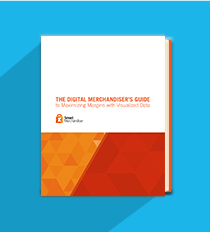
Personalized storefronts have automated many aspects of the online merchandising process; however the role of an eCommerce merchandising manager is becoming even more essential to the operation. While brick-and-mortar merchandisers’ shift their focus from products to customers, the same mentality is even more important in the online world because the customer cannot physically interact the product.
The eCommerce merchandiser must overlay the correct set of business rules to ensure online personalization aligns with the retailer. To successfully reach the online consumer, the eCommerce merchandising manager must create a story behind each product.
Increasing Sales through Merchandise Stories
How can merchandise stories posted by an online visual merchandiser reach a new set of consumers to increase sales? By telling a story using the merchandise.
In What Children’s Programming Can Teach Content Marketers, the author states, “…the shows were intended to sell us something…because they had gone beyond advertising and into storytelling.” Essentially, advertising has become the storytelling vehicle for a product or service.
Creating a story about each product can be accomplished through a variety of avenues including:
Behave Like a Dear Friend
When developing the story, approach it as if you are a friend of the customer. Describe the product or service to customer as if you are telling your best friend. This will create an emotional connection with the customer and build trust, leading to increased sales.
Do Not Rely on a Description of Features and Benefits
Consumers do not want to read through a list of features and benefits. That’s boring, dull and does not engage them. Instead, they would rather learn what they can do to or with the product or service. They are searching for this specific item to fulfill a need and improve their lives. Therefore, it is your job as an eCommerce merchandiser to provide that information.
Emotionally Engage your Customers
Good narratives engage the mind and fill the heart with emotion. Why not take this idea and apply it to products? When telling a merchandising story, you want to tie your product with a positive emotion to remind consumers of something warm and familiar. This is not easy to do, given that every customer has had different life experiences. To be effective, you want to create a general sense of emotion that is applicable to your general target market.
Let the Customers Talk
Give your customer a chance to tell your story and provide proof of satisfaction, which builds trust with your customers. The more trusting customers are of your product, the higher the probability of a sale.
In an article by Corey Pemberton, he notes that most websites have a credibility problem. The modern online shopper reads several reviews of a product prior to purchasing. They are looking for the good and bad qualities of both the product and company. Therefore, when telling a merchandise story, include comments from satisfied customers.
Show How Customers Use the Product
Similarly, many satisfied customers will post photos and videos of how they are using the product in their daily life. Use those in the story as part of the testimonial. Online customers don’t want to read about how easy it is; they want proof. What better way to provide that proof than through a video tutorial? If you don’t have such videos, make one.
As you set out to create your marketing campaigns, remember to employ storytelling tactics to intrigue customers, help engage them in an emotional experience as they make a purchase, and, ultimately, grow your relevance with the greater online community.
Improving profit margins is at the top of all eCommerce merchandiser’s to-do lists which is why we’ve created The Digital Merchandiser’s Guide to Maximizing Margins with Visualized Data eBook.
Download the eBook to learn more!


